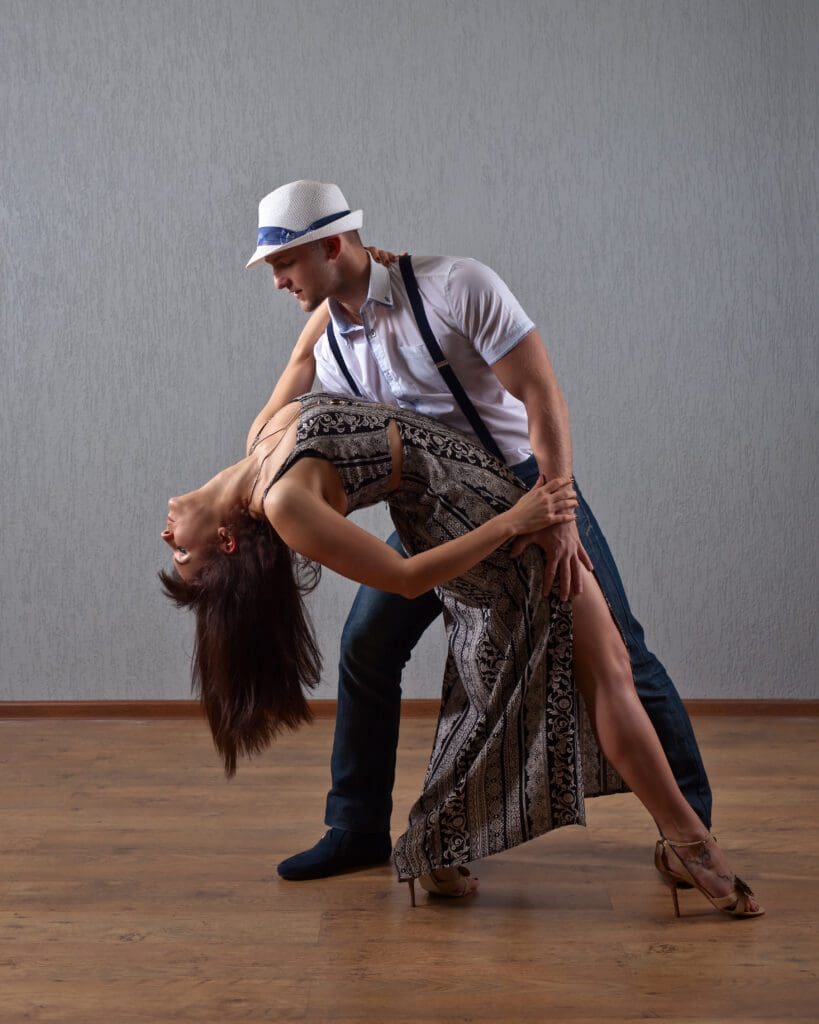Hustle
Hustle History
The Hustle, a dynamic and rhythmic dance form, has an interesting history that reflects the cultural shifts of the 1970s:
1970s Disco Era Origins:
- The Hustle originated in the 1970s, closely tied to the disco music craze of the era.
- It began in urban nightclubs and was popularized by dance parties and clubs in New York City.
Diverse Influences:
- The dance drew influences from earlier styles like Swing and Salsa, adapted to the disco beats of the time.
- The Hustle was initially a line dance before evolving into a partner dance with elaborate arm movements and turns.
Rise to Mainstream Popularity:
- The release of the movie “Saturday Night Fever” in 1977 significantly boosted the popularity of the Hustle.
- This film, featuring John Travolta, brought the dance into mainstream culture.
Evolution and Styles:
- The Hustle has several variations, including the New York Hustle, the Latin Hustle, and the Street Hustle.
- Each style varies in its steps and movements but retains the core elements of rhythmic, smooth, and coordinated dance to disco music.
Contemporary Scene:
- Today, the Hustle is still popular in dance clubs and social dance events.
- It has also found a place in competitive dance, especially in the United States.
In summary, the Hustle emerged from the disco era of the 1970s, capturing the energetic and rhythmic spirit of the time, and has evolved into a beloved dance form celebrated in both social and competitive arenas.
Hustle Characteristics
- The Hustle is a lively and energetic dance, known for its smooth, fast-paced movements synchronized to the upbeat rhythms of disco music. It features a combination of elaborate arm styling, spins, and turns, often with a strong emphasis on timing and coordination between partners. The Hustle exudes a fun, spirited vibe, making it a popular choice for social and competitive dancing alike.
Hustle Music Information
Hustle music, synonymous with the vibrant energy of the 1970s disco era, has distinct characteristics:
Tempo: The tempo of Hustle music is typically fast-paced, aligning with the energetic and lively nature of the dance. It generally ranges between 100 to 120 beats per minute (bpm).
Time Signature: Hustle music commonly uses a 4/4 time signature, providing a steady and predictable rhythm that’s easy to dance to.
Rhythmic Pattern: The music features a strong, consistent beat with an emphasis on the bass, creating a pulsating rhythm that drives the dance’s movements.
Musical Style: Characterized by the iconic sounds of the disco era, Hustle music includes elements like electronic instruments, synthesizers, and funk-based rhythms.
Mood: The overall mood of Hustle music is upbeat, lively, and fun, reflecting the dance’s social and joyful spirit.
These musical elements create an infectious, rhythmic backdrop for the Hustle, making it a dance that embodies the celebratory and energetic essence of the disco era.
